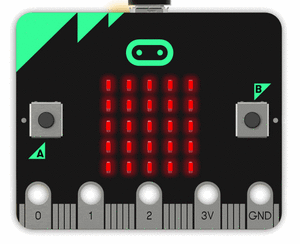Digital Systems: Difference between revisions
Jump to navigation
Jump to search
No edit summary |
Tags: Removed redirect Undo |
||
| (78 intermediate revisions by the same user not shown) | |||
| Line 1: | Line 1: | ||
{{ | {{Intro}} | ||
==Resources== | ==Resources== | ||
Information about the course is provided on several other pages. | Information about the course is provided on several other pages. | ||
* [[Syllabus and synopsis]]. | * [[Syllabus and synopsis]]. | ||
* [[Lecture notes| | * [[Lecture notes|Notes]] for each lecture. | ||
* [[Problem sheets]]. | * [[Problem sheets]]. | ||
* Information about the [[laboratory exercises]]. | * Information about the [[laboratory exercises]]. | ||
* A [[reading list]]. | * A [[reading list]]. | ||
* A [[C – a very quick guide|very quick quide]] to programming in C. | |||
* A page about the [[The BBC micro:bit|BBC {{Microbit}}]], including links to online resources. | * A page about the [[The BBC micro:bit|BBC {{Microbit}}]], including links to online resources. | ||
* A page about the [[ | * A page about the [[Microbian|{{Microbian}}]] operating system. | ||
* A page of [[frequently asked questions]]. | * A page of [[frequently asked questions]]. | ||
* A [[glossary]], defining terms used in the course. | * A [[glossary]], defining terms used in the course. | ||
* A [[Thumb instructions by lecture| | * A useful page listing the [[Thumb instructions by lecture|Thumb instructions]] introduced in each lecture. | ||
And last of all: | |||
* There's a website for my book [https://spivey.oriel.ox.ac.uk/baremetal Bare Metal {{microbit}}], containing expanded versions of the lab materials for the course, with explanations appended. | |||
==Miscellaneous== | ==Miscellaneous== | ||
* A literate Haskell version of the [[Thumb simulator]], differing in many details, including the names of control signals. | * A literate Haskell version of the [[Thumb simulator]], differing in many details, including the names of control signals. | ||
* Notes for the project of [[The | * Notes for the project of [[The microbian project|extending and porting {{microbian}}]]. | ||
* A list of ways of [[Programming the micro:bit|programming the {{microbit}}]]. | * A list of ways of [[Programming the micro:bit|programming the {{microbit}}]]. | ||
* Copies of any special [[handouts]]. | |||
==Links== | ==Links== | ||
Latest revision as of 14:56, 9 March 2024
Digital systems is a course about how computers work, from logic gates and latches at the bottom, to concurrent processes at the top (running under a simple operating system), with time spent on machine-level programming in the middle. For an easy start, we will begin in the middle with small programs written in machine code.
- In Hilary Term, we will study low-level programming with the help of a tiny computer, the BBC micro:bit, which includes an ARM-based microcontroller as its processor. Starting in assembly language and moving on to C, we will learn about the instructions that make up machine code, including arithmetic, branching, memory access, and subroutines. We will also (vitally for embedded systems) learn about controlling I/O devices, such as the buttons and lights on the micro:bit and the serial interface that allows it to talk to a host computer. Once a program reaches a certain degree of complexity, it is no longer sufficient to wait in a tight loop for an event to happen, and we will study the hardware and software aspects of solutions to this problem: using interrupts to respond to external events, and an operating system to structure the program as a family of concurrent processes, each responsible for one part of the task.
- In Trinity Term, we will study the elements of computer hardware, building up from gates and latches to architectural elements such as registers, adders and decoders, and finally a paper model of a processor able to execute a selection of ARM instructions, supported by an architectural simulator.
Resources
Information about the course is provided on several other pages.
- Syllabus and synopsis.
- Notes for each lecture.
- Problem sheets.
- Information about the laboratory exercises.
- A reading list.
- A very quick quide to programming in C.
- A page about the BBC micro:bit, including links to online resources.
- A page about the micro:bian operating system.
- A page of frequently asked questions.
- A glossary, defining terms used in the course.
- A useful page listing the Thumb instructions introduced in each lecture.
And last of all:
- There's a website for my book Bare Metal micro:bit, containing expanded versions of the lab materials for the course, with explanations appended.
Miscellaneous
- A literate Haskell version of the Thumb simulator, differing in many details, including the names of control signals.
- Notes for the project of extending and porting micro:bian.
- A list of ways of programming the micro:bit.
- Copies of any special handouts.
Links
- Jay Carlson reviews dozens of different microcontrollers costing $1 or less.
- More than you could possibly need to know about bit-twiddling hacks.
- ↑ So called because the board dangles from its USB cable like a teabag dangling from its string.
